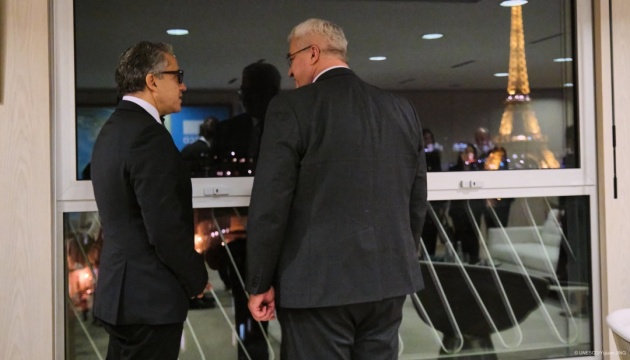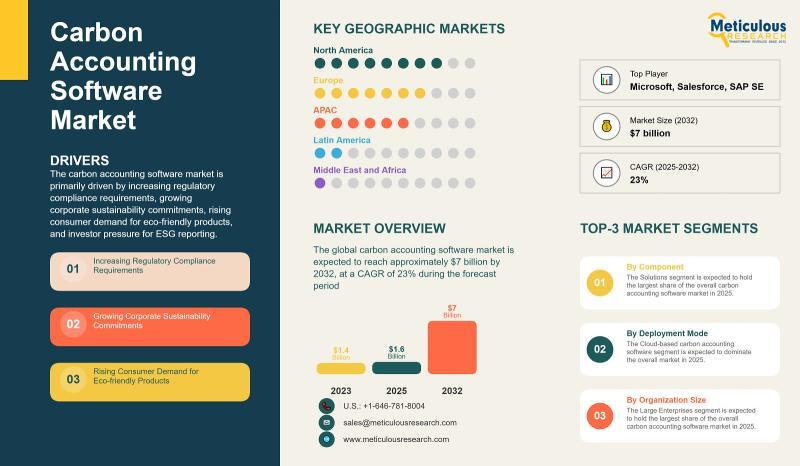County Votes in Favor of Solid Waste Tipping Fee for Commercial Haulers – waynecountynews.net

Wayne County Commission Meeting Report: October 20, 2025
Advancing Sustainable Waste Management in Alignment with SDG 11 and SDG 12
The commission addressed critical issues in municipal waste management, a key component of SDG 11 (Sustainable Cities and Communities) and SDG 12 (Responsible Consumption and Production), with a focus on creating a financially sustainable and equitable system.
-
Public Forum on Solid Waste:
- Citizens voiced support for implementing a tipping fee for commercial haulers to ensure the financial viability of the Solid Waste Department, aligning with SDG 11.6 (municipal waste management).
- The value of county convenience centers was emphasized as a vital service for residents.
- Concerns were raised about for-profit haulers using the county transfer station without charge, highlighting a need for equitable policies.
-
Commission Action on Tipping Fee:
- A motion to implement a five-cent-per-pound tipping fee for commercial haulers at the Wayne County Solid Waste Facility was approved.
- This action aims to create a more equitable cost structure and supports SDG 12.5 by incentivizing waste reduction among commercial entities.
-
Future Directives for Waste Management:
- The commission mandated that the Solid Waste Department provide a study on reducing departmental expenses within three months.
- A motion was passed to ensure the county’s financial advisor receives necessary data for a comprehensive cost and improvement analysis.
- The potential for increased revenue through enhanced recycling programs was discussed as a strategy to further support the principles of a circular economy as outlined in SDG 12.
Strengthening Community Health, Infrastructure, and Resilience (SDG 3, SDG 9, SDG 11)
Significant decisions were made to invest in and maintain local infrastructure, directly contributing to community health, safety, and resilience.
-
Healthcare Infrastructure and Access:
- Funding was approved for a new boiler at Wayne Medical Center, ensuring the operational integrity of a key health facility in line with SDG 3 (Good Health and Well-being).
- The completion of a new, state-of-the-art landing zone for emergency medical helicopters in the Southgate community was announced, enhancing critical care access and contributing to SDG 11.5 (reducing the impact of disasters).
- A one-year agreement was approved with Heritage Health Solutions to manage inmate healthcare costs, promoting efficient use of public funds for health services.
-
Community Infrastructure Maintenance:
- A bid was awarded for the roof replacement at the Waynesboro Senior Center, maintaining a vital facility for the elderly population.
- The Highway Superintendent reported on road repairs, noting that budget constraints, a challenge to achieving SDG 9 (Industry, Innovation, and Infrastructure), necessitate temporary fixes until more permanent solutions become affordable.
Fostering Social Equity and Well-being (SDG 1, SDG 2, SDG 10)
The commission recognized and supported programs aimed at assisting vulnerable populations, reinforcing the county’s commitment to social development goals.
-
Support for South Central Human Resource Agency (SCHRA):
- SCHRA’s Executive Director highlighted the agency’s impact, providing programs that address SDG 1 (No Poverty), SDG 2 (Zero Hunger), and SDG 10 (Reduced Inequalities).
- Services including Head Start, meals for seniors, and job training benefited over 5,000 residents last year.
- The agency requested the continued use of a county-owned building rent-free to prevent cuts to essential services, particularly the senior meals program.
Promoting Sustainable Economic Growth and Governance (SDG 8, SDG 9, SDG 15)
Actions were taken to foster local economic activity, ensure fair governance, and prepare for future industrial development.
-
Economic Development Initiatives:
- A low-cost, ten-year land lease was approved for the Chamber of Commerce to host agricultural and community events, supporting the local economy in line with SDG 8 (Decent Work and Economic Growth).
- The commission approved the use of a $10,000 Three Star Grant for soil testing at the Industrial Park, a foundational step for attracting new industry and advancing SDG 9.
-
Tax Policy and Environmental Governance:
- A motion was passed to request the State Legislature repeal a 1989 Private Act imposing a Pulpwood Severance Tax.
- This decision aims to create a more equitable tax environment for local industries and has implications for the sustainable management of forest resources, a key aspect of SDG 15 (Life on Land).
Enhancing Public Institutions and Education (SDG 16, SDG 4)
The commission focused on strengthening public institutions and celebrating educational achievements within the county.
-
Strengthening Public Safety and Justice:
- The purchase of two new metal detectors was approved to enhance security, supporting the goals of SDG 16 (Peace, Justice, and Strong Institutions).
- The Sheriff provided a report on departmental activities, inmate housing revenue, and efforts to operate effectively despite staffing shortages.
-
Commitment to Quality Education:
- The Director of Schools recognized significant achievements reinforcing SDG 4 (Quality Education), including 15 teachers reaching the highest performance rank and Wayne County High School receiving a Level 5 overall rating.
-
Civic Engagement and Governance:
- Three new members were appointed to the Library Board to support community access to information and learning.
- Sections of three roads in Clifton were renamed to honor local families, reflecting community heritage and identity.
Sustainable Development Goals (SDGs) Addressed in the Article
SDG 3: Good Health and Well-being
- The article discusses several health-related issues, including the construction of a new landing zone for emergency medical helicopters, the approval of a new boiler for the Wayne Medical Center, and a proposal to reduce inmate healthcare costs. These topics directly relate to ensuring healthy lives and promoting well-being for all residents.
SDG 4: Quality Education
- The report from the Wayne County Director of Schools, which recognizes high-achieving teachers and the high school’s overall performance, connects to the goal of ensuring inclusive and equitable quality education.
SDG 9: Industry, Innovation, and Infrastructure
- Discussions about road repairs, even with limited funds, and the approval of grant funds for soil testing at the Industrial Park relate to building resilient infrastructure and promoting sustainable industrialization.
SDG 11: Sustainable Cities and Communities
- The extensive debate on the Solid Waste Department, including tipping fees and convenience centers, directly addresses municipal waste management. Additionally, the new emergency helicopter landing zone enhances community safety and resilience.
SDG 12: Responsible Consumption and Production
- The focus on improving the county’s recycling program and reducing waste generation through better management practices at the Solid Waste Department aligns with ensuring sustainable consumption and production patterns.
SDG 16: Peace, Justice, and Strong Institutions
- The article itself is a report of a local government meeting, showcasing the functioning of a public institution. The inclusion of a public forum for citizens to voice concerns and the transparent voting process on various issues demonstrate an effective, accountable, and inclusive institution at the local level.
SDG 17: Partnerships for the Goals
- The article highlights multiple partnerships, such as the county’s relationship with the South Central Human Resource Agency (SCHRA), the agreement with Heritage Health Solutions for inmate healthcare, the cost-sharing plan with Maury Regional for the hospital boiler, and the land lease to the Chamber of Commerce. These exemplify public, public-private, and civil society partnerships.
Specific SDG Targets Identified
SDG 3: Good Health and Well-being
- Target 3.8: Achieve universal health coverage, including financial risk protection, quality essential health-care services… The article touches on this through the approval of a new boiler for the Wayne Medical Center, ensuring the facility remains operational, and the partnership with Heritage Health Solutions to manage and reduce the cost of inmate healthcare, which is a form of financial risk protection for the county.
- Target 3.d: Strengthen the capacity… for early warning, risk reduction and management of national and global health risks. The construction of an “Air Evac-approved, state-of-the-art landing zone/helicopter pad” in the Southgate community directly strengthens the county’s capacity for emergency medical response, reducing risks for residents in need of urgent care.
SDG 4: Quality Education
- Target 4.1: By 2030, ensure that all girls and boys complete free, equitable and quality primary and secondary education… The recognition of “15 teachers in the Wayne County School System” reaching the highest performance rank (Level 5) and the “Wayne County High School” receiving a Level 5 overall indicates a focus on and achievement in providing quality education.
SDG 9: Industry, Innovation, and Infrastructure
- Target 9.1: Develop quality, reliable, sustainable and resilient infrastructure… to support economic development and human well-being… The Highway Superintendent’s report on road repairs, acknowledging that current fixes with “chert” are temporary due to budget constraints (“hot mix is too expensive”), directly relates to the challenges and efforts in maintaining local infrastructure.
SDG 11: Sustainable Cities and Communities
- Target 11.6: By 2030, reduce the adverse per capita environmental impact of cities, including by paying special attention to… municipal and other waste management. The lengthy discussion about the Solid Waste Department’s financial issues and the decision to implement a “tipping fee of five cents per pound” for commercial haulers is a direct attempt to manage municipal solid waste more sustainably.
SDG 12: Responsible Consumption and Production
- Target 12.5: By 2030, substantially reduce waste generation through prevention, reduction, recycling and reuse. Commissioner Creecy’s advocacy for the county’s recycling program, stating that “more recycling would bring in more revenue” and reminding the commission that residents can get “unsorted recyclables picked up curbside,” points directly to efforts to reduce waste through recycling.
SDG 16: Peace, Justice, and Strong Institutions
- Target 16.7: Ensure responsive, inclusive, participatory and representative decision-making at all levels. The article details a “public forum for citizens to address the commission,” where four different residents (Jeff Thompson, Tracey Thompson, Angie Butler, and Jessica Bailey) voiced their opinions and concerns, directly influencing the commission’s discussion on solid waste and highlighting community projects. This is a clear example of participatory decision-making.
SDG 17: Partnerships for the Goals
- Target 17.17: Encourage and promote effective public, public-private and civil society partnerships… The article describes the county’s partnership with SCHRA, a human resource agency, where the county provides a rent-free office. It also mentions a public-private partnership with “Heritage Health Solutions” for inmate healthcare and a public-public partnership with “Maury Regional” for the hospital boiler, showcasing multi-stakeholder collaboration.
Indicators for Measuring Progress
For Targets 11.6 and 12.5 (Waste Management and Recycling)
- Indicator: The implementation of a “tipping fee of five cents per pound” for commercial haulers. This financial measure can be tracked to see its effect on the volume of waste dumped and the financial stability of the Solid Waste Department.
- Indicator: The expected increase in the monthly sanitation fee for city residents from “$9 to $20.01.” This is a quantifiable economic indicator of the cost of waste management being passed to consumers.
- Indicator: The availability of a “free of charge” curbside pickup service for unsorted recyclables. The participation rate in this program could be used to measure progress towards waste reduction.
For Target 3.8 (Health Services and Infrastructure)
- Indicator: The total investment in health infrastructure, specifically the “$278,671” cost of the new boiler for Wayne Medical Center. This shows a direct financial commitment to maintaining quality health facilities.
- Indicator: The financial savings realized from the one-year agreement with Heritage Health Services for inmate healthcare. The article states the goal is to “save a great deal of money,” and tracking these savings would be a key performance indicator.
For Target 4.1 (Quality Education)
- Indicator: The number of teachers achieving the highest performance level (“15 teachers… had reached Level 5”).
- Indicator: The overall performance rating of schools in the district (“Wayne County High School received a Level 5 overall”). These are direct measures of educational quality within the system.
For Target 16.7 (Participatory Decision-Making)
- Indicator: The number of citizens who participate in the public forum. The article names four citizens, providing a simple count of public engagement in this specific meeting.
For Target 17.17 (Partnerships)
- Indicator: The economic value of partnerships to the community. The article explicitly states that SCHRA programs provided an “economic value of over one million dollars” to “over 5,000 Wayne Countians” in the last year, quantifying the impact of this civil society partnership.
Summary of SDGs, Targets, and Indicators
| SDGs | Targets | Indicators |
|---|---|---|
| SDG 3: Good Health and Well-being | 3.8: Achieve universal health coverage and quality essential health-care services. 3.d: Strengthen capacity for health risk reduction and management. |
– Total cost of new hospital boiler ($278,671). – Financial savings from inmate healthcare partnership. – Construction of one new emergency helicopter landing zone. |
| SDG 4: Quality Education | 4.1: Ensure equitable and quality primary and secondary education. | – Number of teachers reaching Level 5 (15). – School overall performance rating (WCHS received Level 5). |
| SDG 9: Industry, Innovation, and Infrastructure | 9.1: Develop quality, reliable, and resilient infrastructure. | – Use of temporary road repair materials (chert) due to budget limitations. |
| SDG 11: Sustainable Cities and Communities | 11.6: Reduce the adverse environmental impact of cities, focusing on municipal waste management. | – Implementation of a tipping fee for commercial haulers (five cents per pound). – Increase in residential sanitation fee (from $9 to $20.01). |
| SDG 12: Responsible Consumption and Production | 12.5: Substantially reduce waste generation through recycling. | – Availability of free curbside recycling pickup service. |
| SDG 16: Peace, Justice, and Strong Institutions | 16.7: Ensure responsive, inclusive, and participatory decision-making. | – Number of citizens speaking at the public forum (4 mentioned by name). |
| SDG 17: Partnerships for the Goals | 17.17: Encourage and promote effective public, public-private, and civil society partnerships. | – Economic value of SCHRA partnership (over $1 million). – Number of beneficiaries from SCHRA partnership (over 5,000). |
Source: waynecountynews.net
What is Your Reaction?
 Like
0
Like
0
 Dislike
0
Dislike
0
 Love
0
Love
0
 Funny
0
Funny
0
 Angry
0
Angry
0
 Sad
0
Sad
0
 Wow
0
Wow
0
















































:focal(1500,1000)/https://media.globalcitizen.org/a6/9a/a69a4720-d8a1-4715-b596-18738d03c05c/rotary_polio_hero_image.jpg?#)







/countries/sri-lanka/photo-credit---dmc-sri-lanka.tmb-1200v.jpg?sfvrsn=dc298bcc_1#)


















